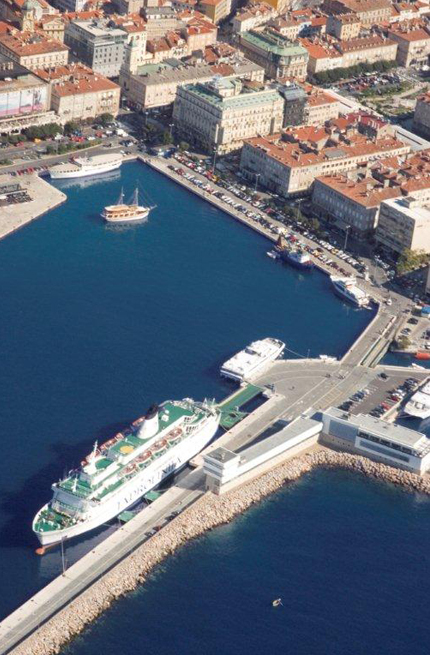
The existing breakwater of the main port basin is popularly called “Molo Longo” because it is 1707 metres long . Today it is used as a passenger terminal and a coastal promenade. The planning and preparation works for the construction of the current breakwater began in 1872 and it was completed in 1888. To honour the empress for historical merits the breakwater was named Molo Maria Teresa. It was designed for the Hungarian Administration by the Hungarian architect Antalo Hajnal, while the construction works were carried out by, among others, a Paris railway construction company. During the 20th century, the breakwater was extended, the pier for closing the breakwater was built in 1908 and the final extension took place in 1934. World War II brought a series of sabotage actions in the area of the port of Rijeka, and the greatest damage was done during the retreat of the German troops in May 1945. Immediately after the war, a great reconstruction of the port aquatorium took place and it lasted until 1961. The cranes on the breakwater were renovated with special pride , since they, as technically revolutionary achievements, were able to significantly improve the status of the port. The breakwater was still under construction when, in 1904, rowing clubs Quarnaro, Canottieri Fiumani and Liburnia built boathouses, club areas, small pools and terraces. The largest construction project on the breakwater was the Quarnaro bathing area from 1912-1913 and was proclaimed the greatest bathing area in the Empire at the dawn of World War II. Apart from the bathing area, the lighthouse has been built on the breakwater head. What has been lost in terms of relaxation and entertainment by the sea, has been compensated by numerous amenities offered in the new building of the maritime passengers terminal.




